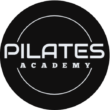Classical Pilates and contemporary Pilates are two styles of the same system, but they have some key differences:
Classical Pilates:
- Traditional Approach: Sticks closely to the original exercises and sequence created by Joseph Pilates.
- Equipment: Uses the original equipment designs by Joseph Pilates, like the Reformer or Cadillac.
- Focus: Emphasises precision, control, and the traditional “flow” of movement.
Think of it as staying true to the way Pilates was designed.
Contemporary Pilates:
- Modern Adaptation: Combines Joseph Pilates’ principles with new knowledge about anatomy, biomechanics, and fitness.
- Flexible Routine: Exercises can be modified or customised to suit individual needs or preferences.
- Variety in Equipment: May use newer types of equipment or props.
- Focus: Incorporates creativity and innovation, often blending Pilates with other exercise styles.
Contemporary Pilates is more adaptable version and uses modern fitness techniques, this can lend itself well to beginners or those with injuries that could require greater adaptation.
Both styles aim to build strength, flexibility, and control, but Classical Pilates follows Joseph Pilates methods more faithfully while Contemporary Pilates allows for more personalisation and variety.
The Pilates Academy use Joseph Pilates classical Pilates method. However in addition you will be given advice and support on contemporary Pilates methods and how can give variations that supports beginners and clients with injuries.
